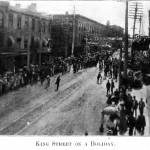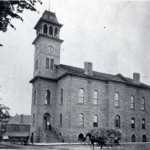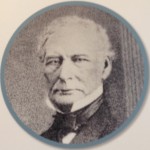This sub-district of the Waterloo Region, made up primarily of the town of Waterloo, the city of Berlin (now Kitchener, as of 1917), Elmira, and surrounding rural communities, is best known for its Mennonite population, who arrived shortly after the turn of the 19th century. Mennonites and European Germans purchased land along the Grand River as a part of the German Company Tract to settle Waterloo North. The Mennonite community has inspired several tourist attractions, such as the St. Jacobs Market and the Pioneer Memorial Tower. Both of these landmarks are symbols of settlement, hard work, and unique Mennonite heritage. However, by 1911, Mennonite people were a minority in the Waterloo Region and lived collectively primarily in the rural areas of Waterloo North. The region’s German-Canadian population was comprised mostly of European German immigrants who outnumbered the Mennonites soon after their arrival in Southern Ontario. After the Mennonites settled the region in the early 19th century, waves of German immigrants seeking to escape the conditions of war torn Europe settled the region between 1812 and 1815. Until the 1860s, immigrants from Germany flooded to the region, often departing from Bremmen, Germany. Once they arrived in Quebec they travelled to the Waterloo Region, drawn to the region due to the overwhelming presence of German culture there.
(August 1914; Briethaupt, Catherine Olive. 1914 Diary (Briethaupt Diary Collection, Rare Books Room, Dana Porter Library, University of Waterloo), 3 August 1914; McLaughin, Ken, and John English. Kitchener: An Illustrated History. Waterloo: Wilfrid Laurier University Press, 1983.; McLaughin, Ken. The Germans in Canada. Ottawa: The Canadian Historical Association,1985; Celebration of Cityhood 1912. Berlin: The German Printing and Publishing Co of Berlin, 1912; Fifth Census of Canada 1911, Volume I. C.H.Parmelee: Ottawa, 1912; Fourth Census of Canada 1901, Volume I. Ottawa: S.E.Dawson, 1902; Third Census of Canada, 1890-91. S.E.Dawson, 1893; Second Census of Canada, 1880-81. Maclean, Roger & Co: Ottawa, 1883; First Census of Canada, 1870-71. Ottawa: I.B. Taylor, 1873.)



